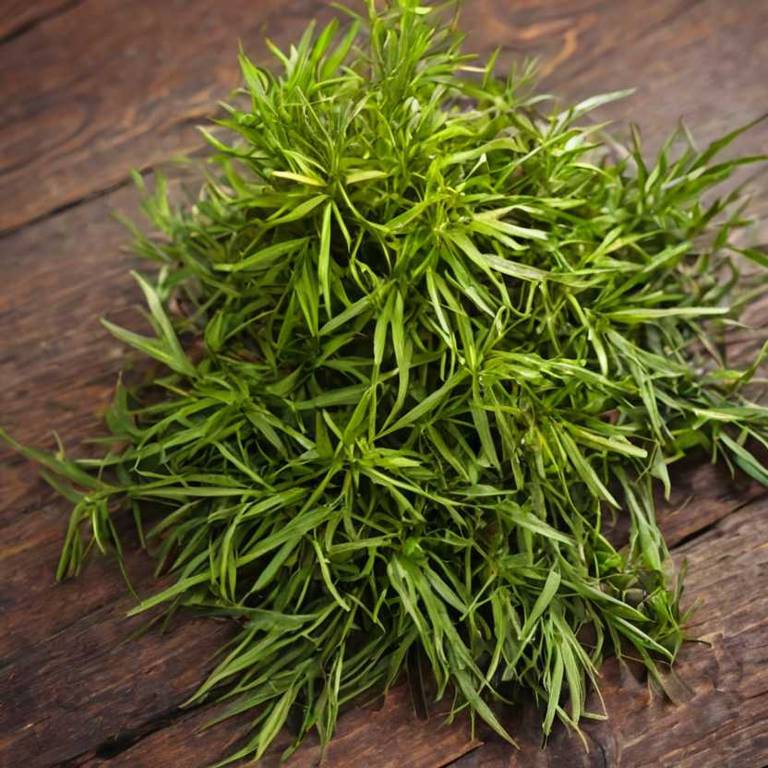10 Best Butea Monosperma Preparations

The best medicinal preparations of Butea monosperma are teas, decoctions, poultices, tinctures, and capsules, each offering unique benefits for various health conditions.
Teas made from its bark or leaves are commonly used to treat inflammation and digestive issues.
Decoctions involve boiling the bark to extract its active compounds, often used for respiratory and skin ailments.
Poultices, made by crushing the plant material and applying it topically, are effective for wounds and infections.
Tinctures provide a concentrated form of the herb, useful for internal and external applications, while capsules offer a convenient and standardized way to consume its medicinal properties.
Below there's a list of the 10 best herbal preparations of butea monosperma for medicinal purposes.
- 1. Teas
- 2. Decoctions
- 3. Poultices
- 4. Tinctures
- 5. Capsules
- 6. Oils
- 7. Creams
- 8. Syrups
- 9. Mucillages
- 10. Lozenges
1. Teas
Butea monosperma teas is commonly used to treat inflammation, digestive issues, and skin conditions.
This herbal preparation is widely utilized in traditional medicine for its anti-inflammatory, antimicrobial, and antioxidant properties. It is often used to alleviate symptoms of gastritis, ulcers, and respiratory infections. The bioactive constituents responsible for its medicinal effects include flavonoids, tannins, alkaloids, and phenolic compounds.
These compounds contribute to its ability to reduce inflammation, combat infections, and support overall immune function.

2. Decoctions
Butea monosperma decoctions is commonly used to treat inflammatory conditions, skin disorders, and digestive issues.
These decoctions are traditionally employed for ailments such as arthritis, leprosy, and gastrointestinal complaints. The medicinal properties of the decoctions are attributed to bioactive constituents like flavonoids, tannins, and alkaloids. These compounds exhibit anti-inflammatory, antimicrobial, and astringent effects.
Additionally, the decoctions are believed to promote wound healing and enhance immune function.

3. Poultices
Butea monosperma poultices is commonly used to treat skin infections, wounds, and inflammatory conditions due to their antimicrobial and anti-inflammatory properties.
These poultices are often applied topically to alleviate symptoms of boils, ulcers, and other dermatological issues. The medicinal uses also include reducing swelling and promoting faster healing of damaged tissues. The bioactive constituents responsible for these effects include tannins, flavonoids, alkaloids, and saponins, which exhibit antimicrobial, analgesic, and anti-inflammatory activities.
These compounds work synergistically to enhance the therapeutic benefits of the poultice.

4. Tinctures
Butea monosperma tinctures is commonly used to treat inflammation, skin disorders, and digestive issues.
These tinctures are traditionally employed for their anti-inflammatory, antimicrobial, and wound-healing properties. They are often used to alleviate symptoms of arthritis, eczema, and gastrointestinal discomfort. The bioactive constituents include flavonoids, tannins, alkaloids, and saponins, which contribute to their therapeutic effects.
These compounds help reduce inflammation, combat infections, and promote tissue repair.

5. Capsules
Butea monosperma capsules is commonly used to treat various inflammatory conditions, digestive disorders, and skin ailments.
These capsules are widely employed in traditional medicine to alleviate symptoms of arthritis, gastritis, and skin infections. The medicinal properties of Butea monosperma are attributed to its bioactive constituents such as flavonoids, tannins, and alkaloids. These compounds exhibit anti-inflammatory, antimicrobial, and antioxidant effects.
Additionally, the capsules are believed to support liver function and promote wound healing.

6. Oils
Butea monosperma oils is commonly used to treat skin infections, inflammation, and wounds due to its antimicrobial and anti-inflammatory properties.
The oil is widely applied topically for conditions such as eczema, psoriasis, and fungal infections. It is also used to relieve pain and reduce swelling in musculoskeletal disorders. The bioactive constituents responsible for these effects include flavonoids, tannins, and alkaloids, which exhibit antioxidant, antimicrobial, and anti-inflammatory activities.
Additionally, the oil may support respiratory health by reducing congestion and soothing coughs.

7. Creams
Butea monosperma creams is commonly used to treat skin conditions and inflammatory disorders.
The herbal preparation is widely applied for its anti-inflammatory, antimicrobial, and wound-healing properties. It is often used to alleviate symptoms of eczema, psoriasis, and fungal infections. The bioactive constituents include flavonoids, tannins, alkaloids, and phenolic compounds, which contribute to its therapeutic effects.
These components help reduce inflammation, combat pathogens, and promote tissue regeneration.

8. Syrups
Butea monosperma syrups is commonly used to treat respiratory disorders, digestive issues, and skin infections due to its antimicrobial and anti-inflammatory properties.
The most common medicinal uses of this herbal preparation include alleviating coughs, bronchitis, and asthma, as well as managing gastrointestinal problems like indigestion and ulcers. It is also applied topically to heal wounds and reduce inflammation in skin conditions. The bioactive constituents responsible for these effects include flavonoids, tannins, alkaloids, and phenolic compounds, which exhibit antioxidant, antimicrobial, and anti-inflammatory activities.
These components work synergistically to provide the therapeutic benefits associated with Butea monosperma syrups.

9. Mucillages
Butea monosperma mucillages is commonly used to treat digestive disorders, skin conditions, and inflammatory diseases.
The mucillages, which are rich in polysaccharides and mucilage compounds, are known for their soothing and healing properties. They are often applied topically for wounds, ulcers, and skin irritations, and ingested to alleviate gastrointestinal issues such as ulcers and diarrhea. The bioactive constituents include mucilage polysaccharides, tannins, flavonoids, and glycosides, which contribute to its anti-inflammatory, antimicrobial, and wound-healing effects.
These properties make the preparation valuable in traditional medicine for a range of health conditions.

10. Lozenges
Butea monosperma lozenges is commonly used to treat respiratory and throat infections, including coughs, sore throats, and inflammation.
These lozenges are also utilized for their antimicrobial and anti-inflammatory properties, making them effective in alleviating symptoms of colds and flu. The most common medicinal uses of this preparation include treating respiratory tract infections, sore throat, and oral infections due to its soothing and healing effects. The bioactive constituents responsible for these medicinal properties include flavonoids, tannins, alkaloids, and phenolic compounds, which exhibit antimicrobial, anti-inflammatory, and antioxidant activities.
These compounds work synergistically to reduce inflammation, combat pathogens, and promote tissue healing in the respiratory and oral mucosa.
